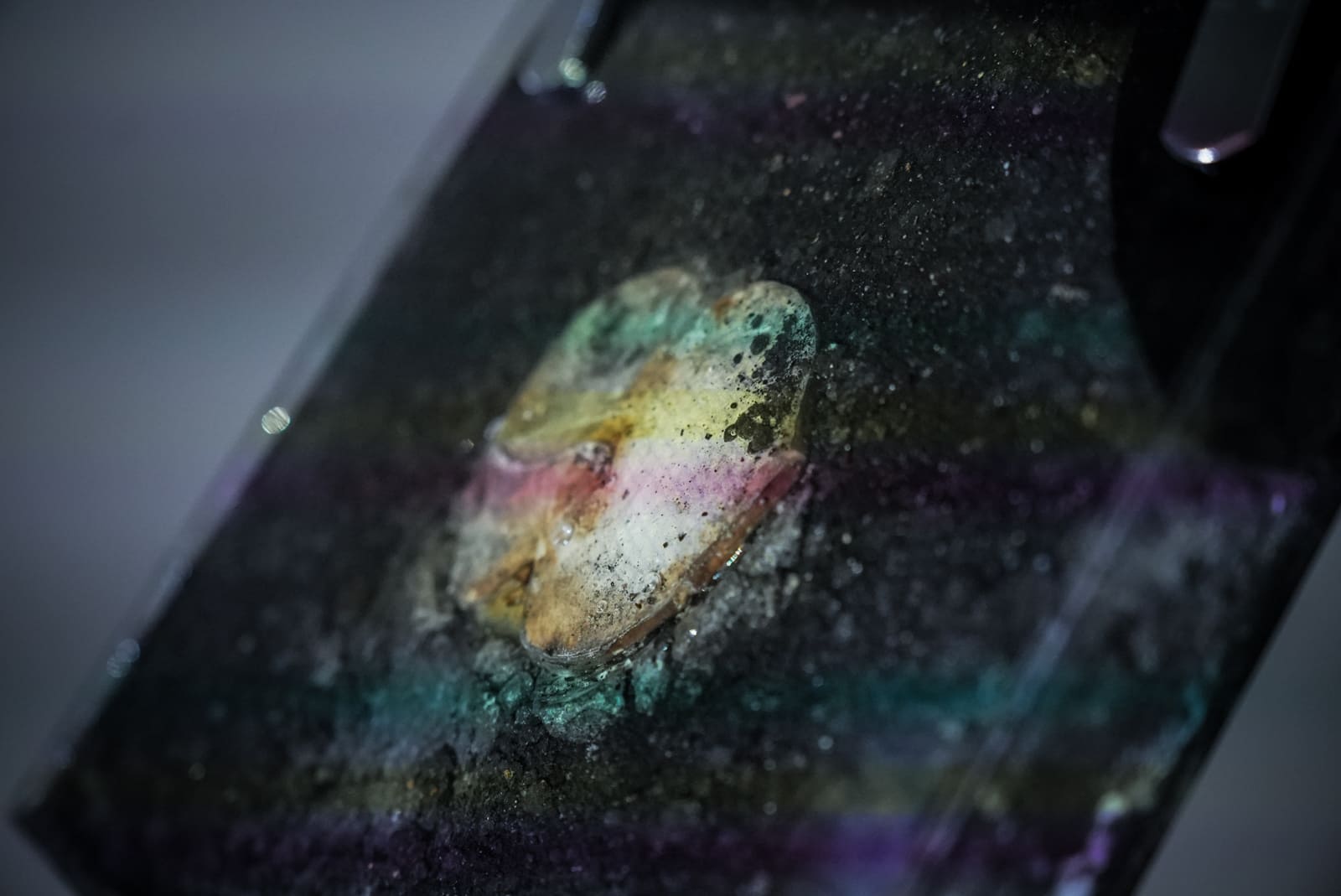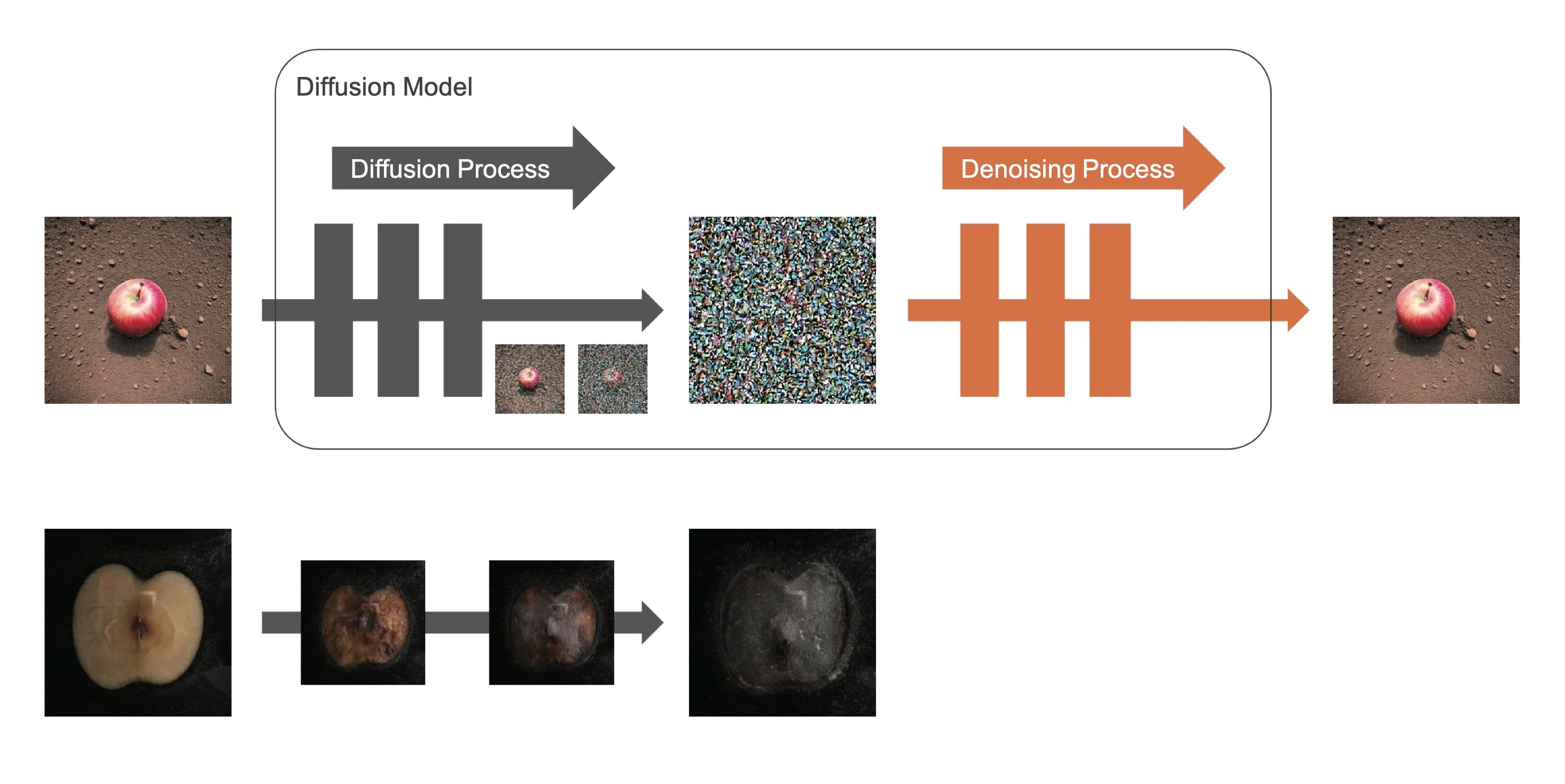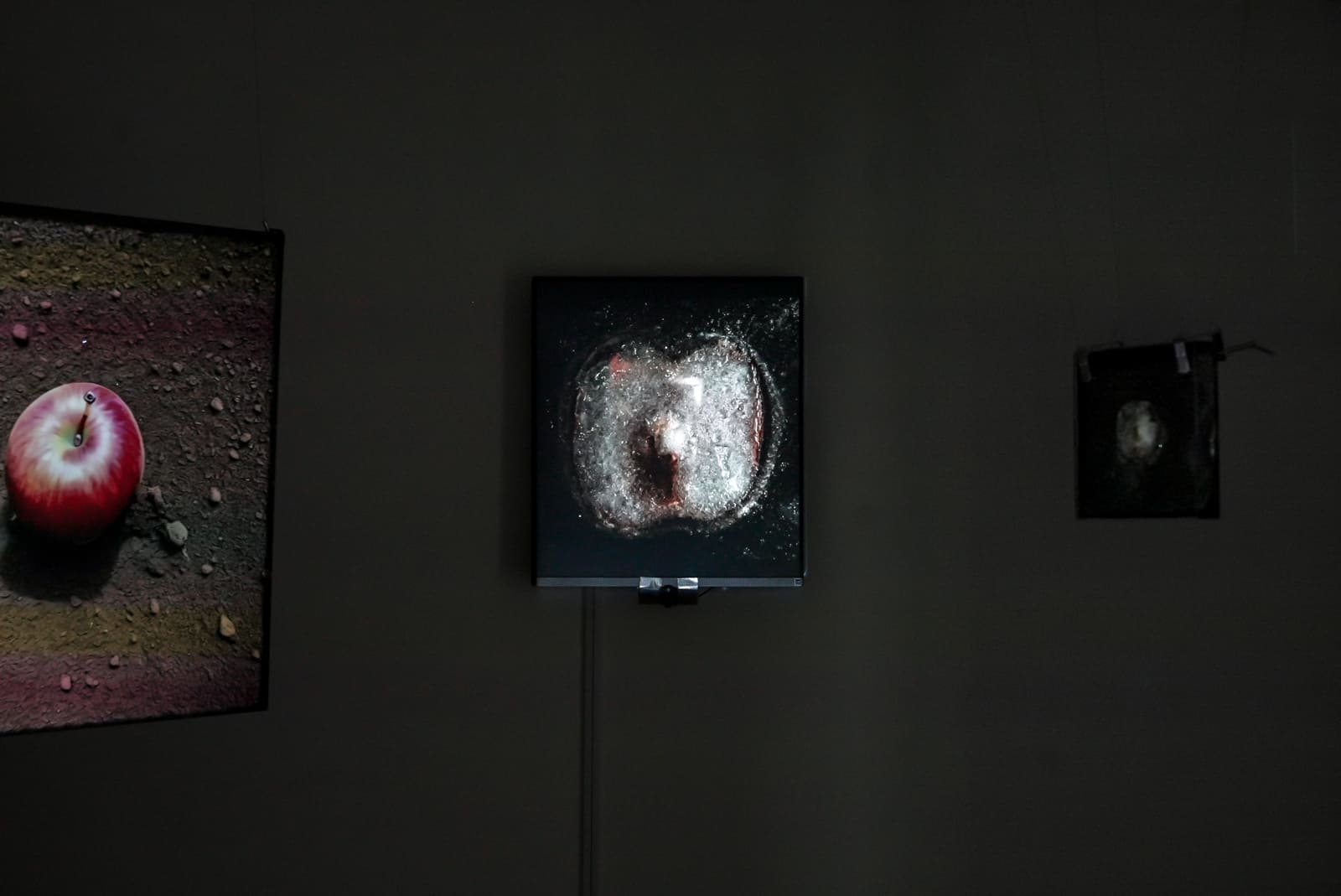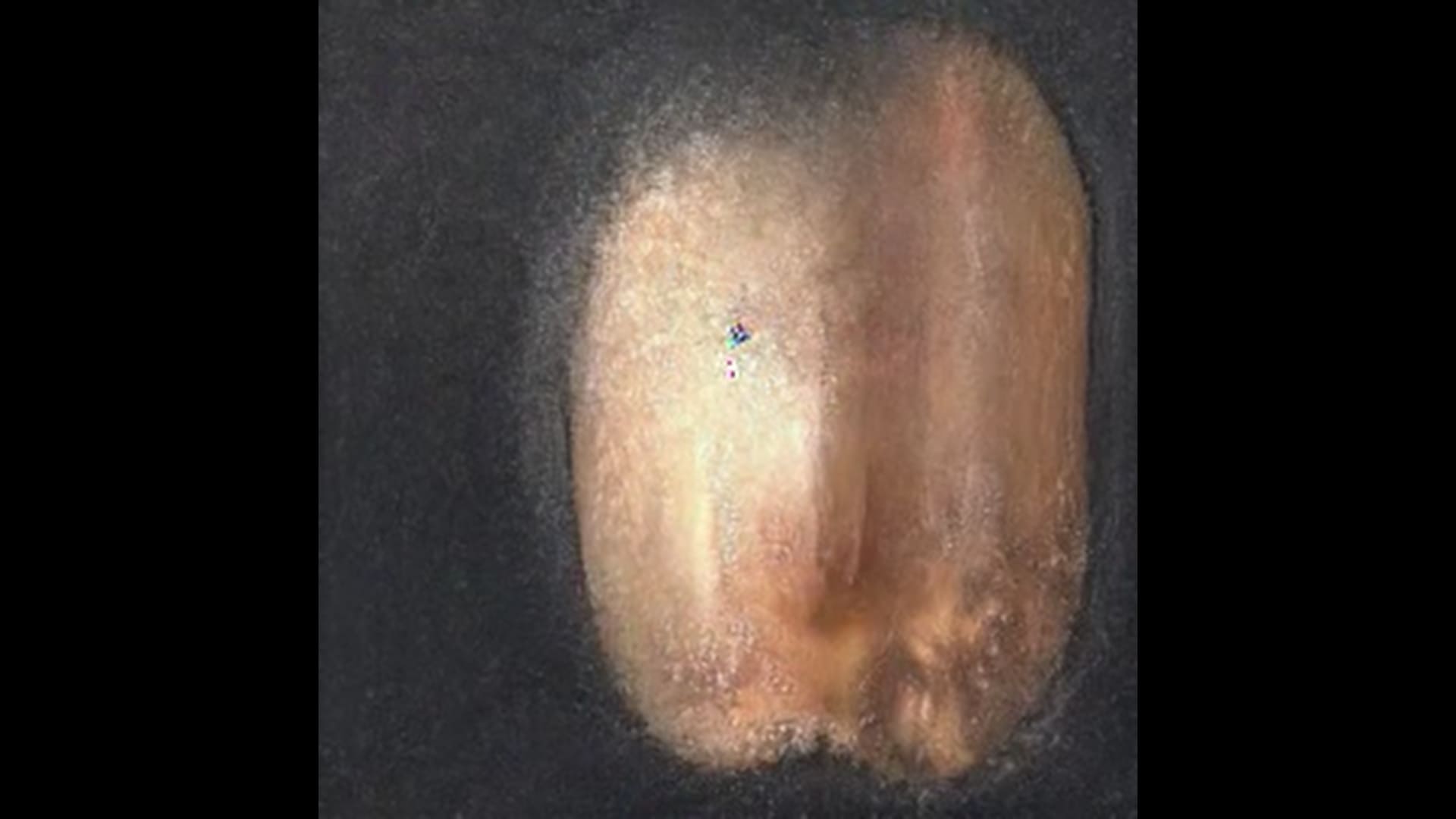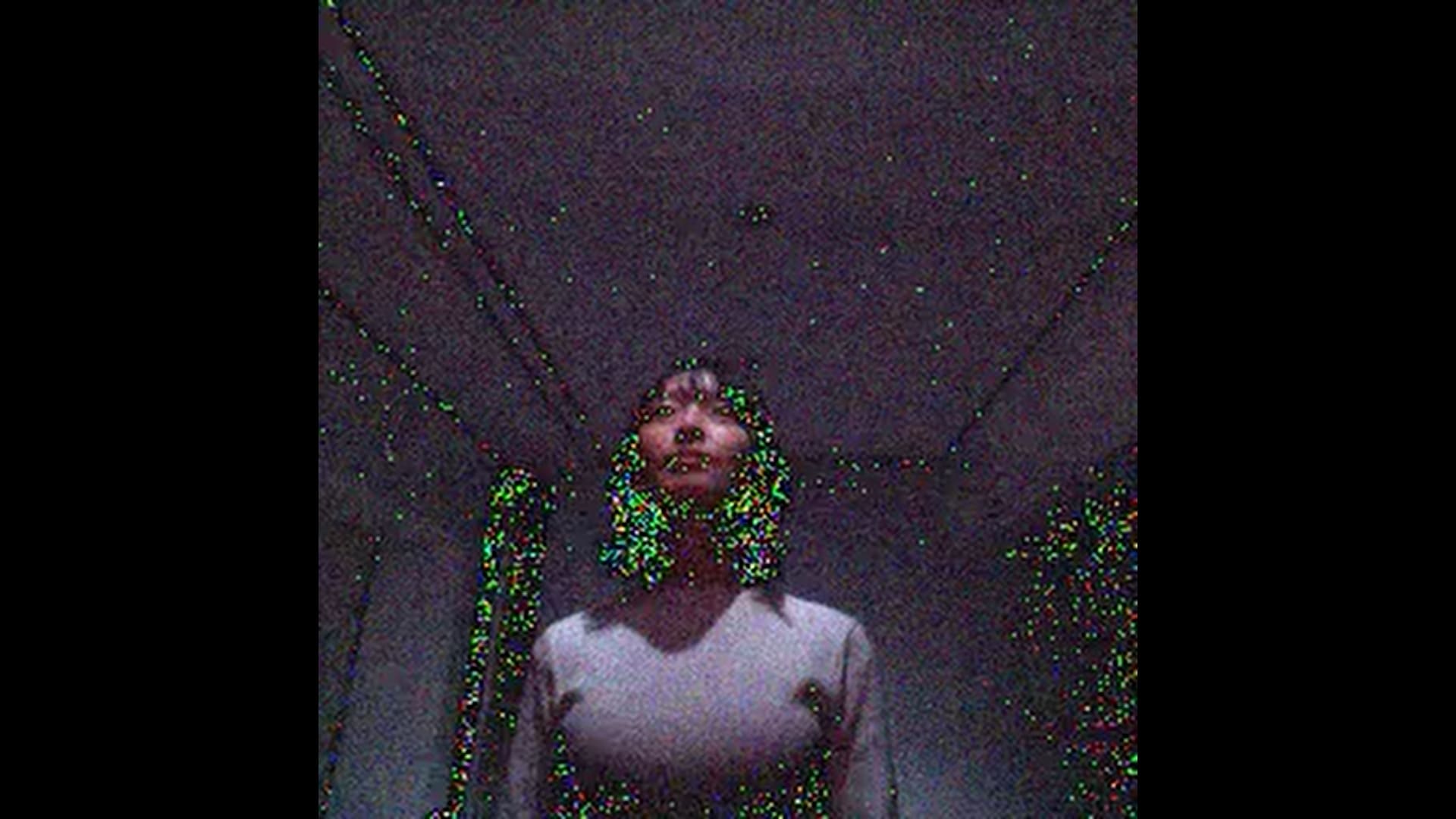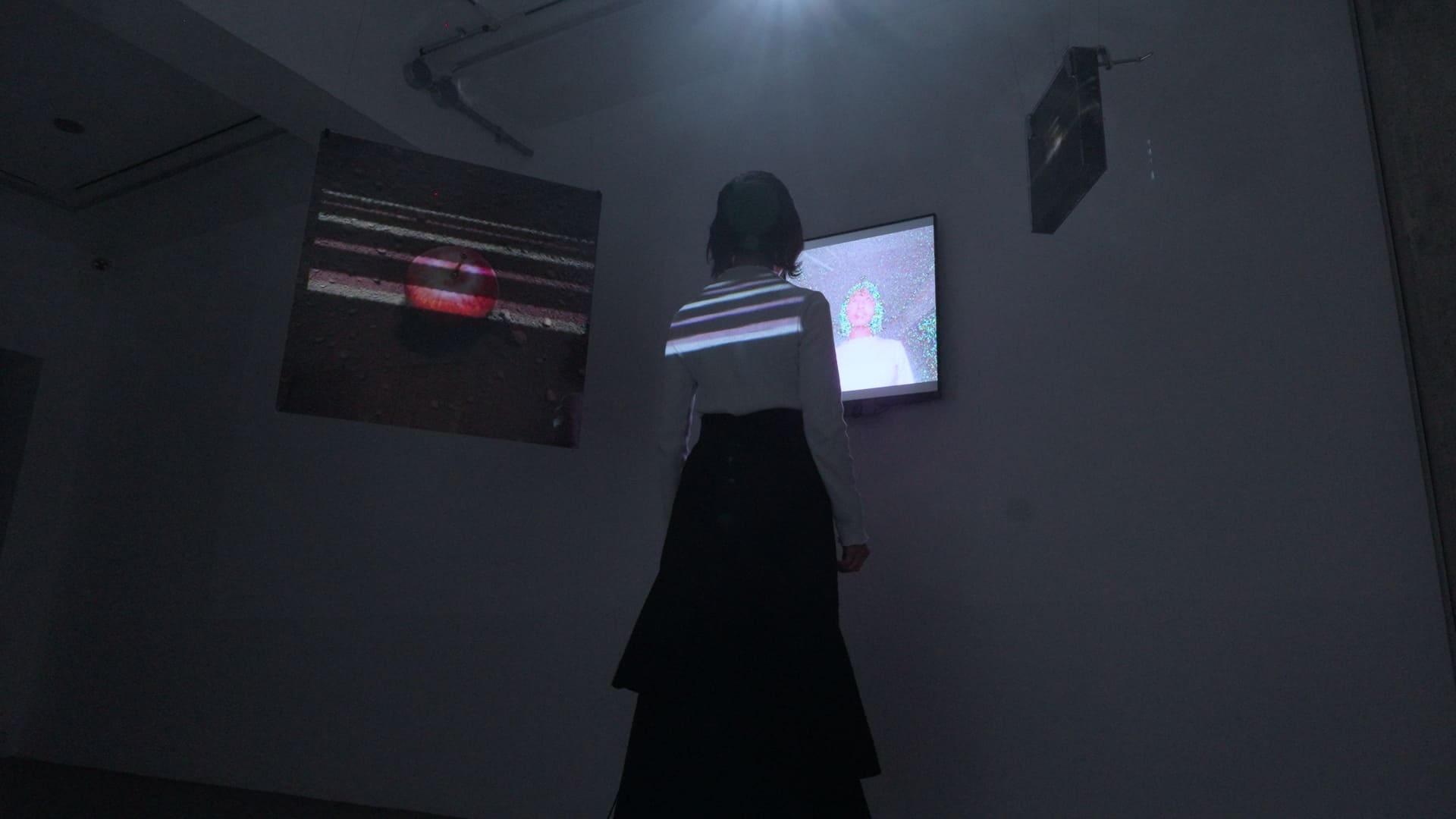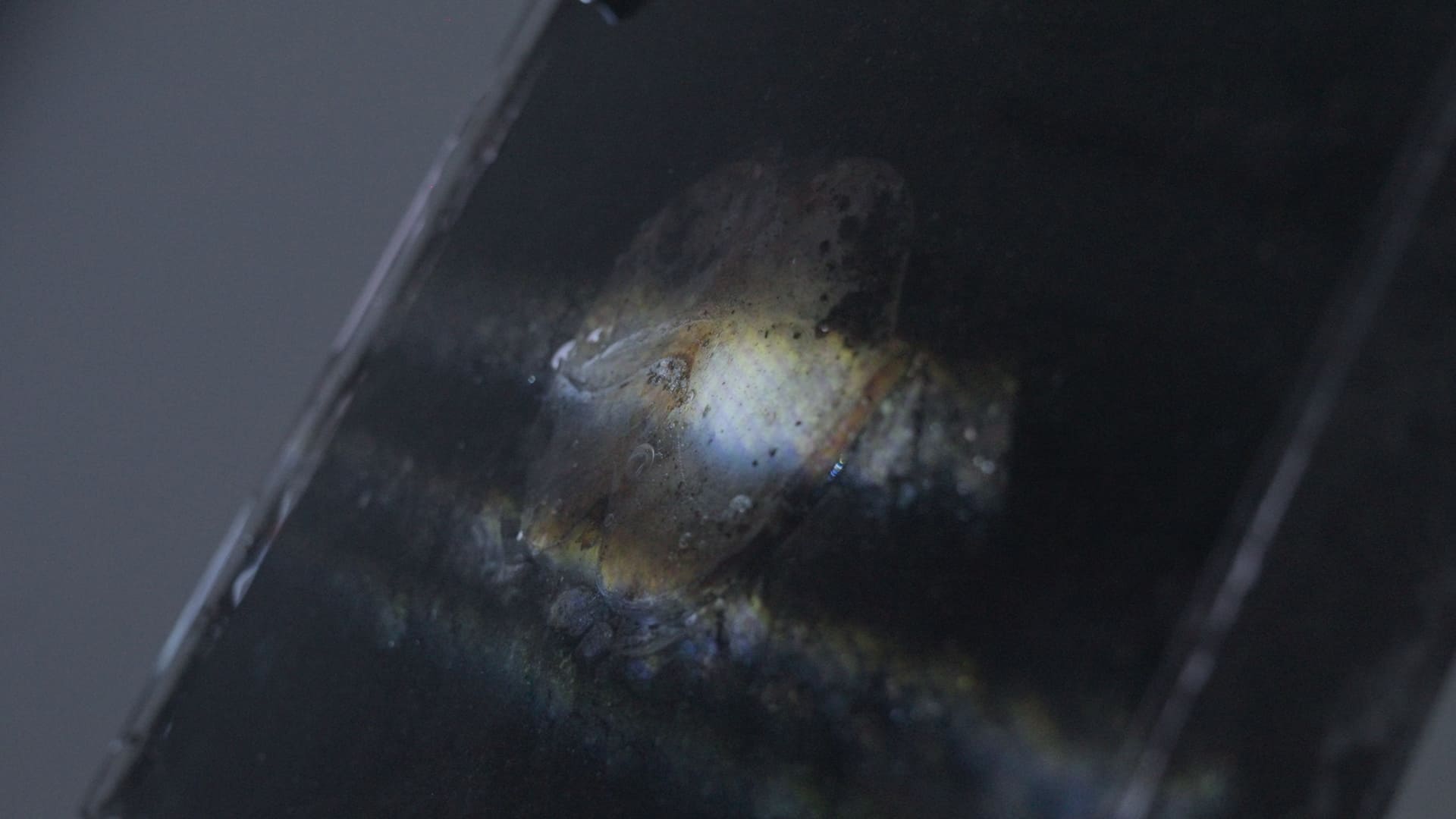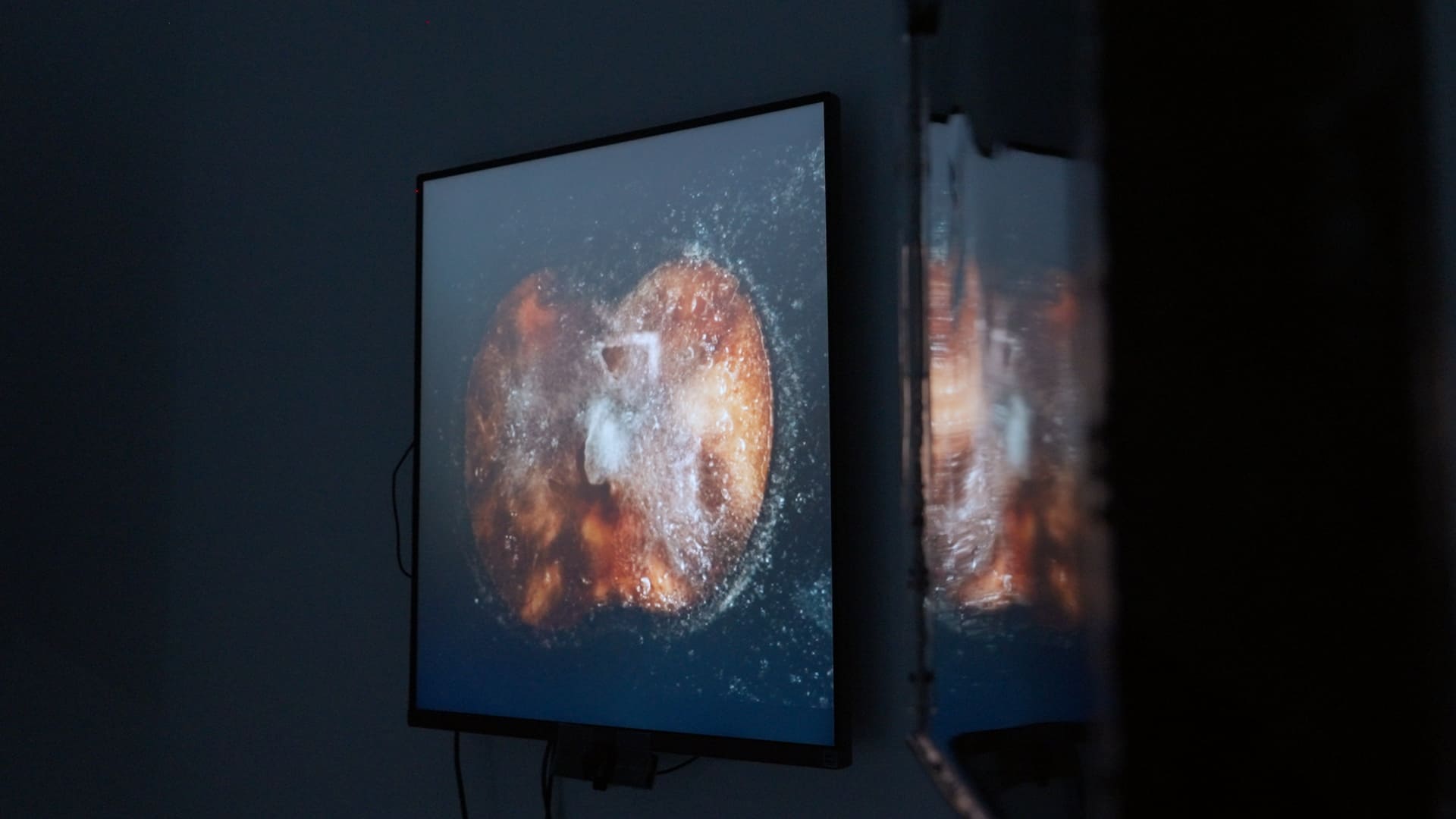Green Diffusion
This work depicts the interplay of destruction and creation by superimposing the process in which objects are broken down by soil microorganisms and then become fertile ground for new objects onto the diffusion model,
Diffusion model is a type of AI-based image generation, realized through learning the diffusion process of image data (in which noise is added, effectively destroying the data). By juxtaposing actual footage of physical decomposition in soil with AI-generated imagery, this piece highlights a new aspect of image generation.
In this installation, viewers are first diffused into a “sea of noise” using the same process as image generation. Then, using a diffusion model trained on the footage of soil decomposition, new images are generated.
Although the decomposition of matter by microorganisms appears to be a destructive process, it is in fact a creative one, providing the fertile soil for new forms to emerge.
This installation highlights the simultaneity of “destruction” and “creation” by juxtaposing the process of decomposition by soil microorganisms—turning material into fertile nutrients—with the noise-adding and noise-removing process of an AI “diffusion model.”
A diffusion model is an AI technique that adds noise to image data (in effect “destroying” it), and then learns to remove that noise to reconstruct a new image. In this piece, the model is trained on actual footage of soil decomposition, placing real images of material breakdown side by side with AI-generated imagery. Both processes share a similar cycle: forms are broken down and subsequently rebuilt into something new.
In the installation space, visitors first experience being “immersed” in a sea of noise, simulating how a diffusion model initially floods an image with noise. Afterward, they witness the generation of new images by the diffusion model trained on footage of soil decomposition.
Although microbial decomposition may appear destructive, it actually nurtures new life and shapes, just as an AI diffusion process emerges from the seemingly chaotic sea of noise to reconstruct new visuals. Presenting these two processes in parallel invites a fresh perspective on how “destruction” and “creation” intersect in both the physical and virtual realms.
